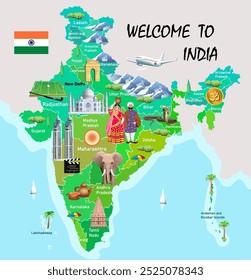In a striking development reshaping South Asia’s geopolitical landscape, India has reportedly made significant inroads in its engagement with the Taliban, signaling a potential pivot in its strategic approach toward Afghanistan and Pakistan. This breakthrough comes amid lingering tensions and decades of rivalry with Pakistan, raising questions about whether New Delhi can leverage its evolving ties with the Taliban to effectively isolate Islamabad on the regional stage. As India deepens its outreach in Kabul, analysts and policymakers alike are closely watching to see if this diplomatic maneuver can be consolidated into a durable strategy that shifts the power balance in the fraught India-Pakistan relationship. The Middle East Forum examines the implications of India’s Taliban breakthrough and its prospects for permanently sidelining Pakistan in a complex and volatile neighborhood.
India’s Strategic Gains in Afghanistan and Their Implications for Regional Power Dynamics
India’s recent strategic maneuvers in Afghanistan signal a calculated push to redefine the regional balance of power. By cultivating discreet yet impactful relations within Taliban ranks, New Delhi seeks to secure its interests in a landscape traditionally dominated by Pakistan’s influence. This subtle shift enables India to gain footholds in intelligence-sharing, infrastructure development, and humanitarian outreach, creating alternative channels of influence beyond conventional diplomatic frameworks. These gains are critical, as they allow India to counter Pakistan’s longstanding narrative and operational leverage in Afghan affairs without overt confrontation.
Key components of India’s evolving strategy include:
- Enhanced intelligence collaboration: Expanding covert communication lines with moderate Taliban factions to monitor extremist movements and foster stability.
- Infrastructure investments: Reviving stalled projects such as roads and hospitals to build grassroots goodwill and economic connectivity.
- Diplomatic repositioning: Engaging regional players like Iran and Central Asian states to create multi-vector pressurization against Pakistan’s influence.
- Humanitarian outreach: Delivering medical aid and education assistance aimed at soft power consolidation.
| Strategic Domain | India’s Approach | Regional Impact |
|---|---|---|
| Security & Intelligence | Covert ties with Taliban moderates | Reduces Pakistan’s operational space |
| Economic Development | Infrastructure revival projects | Builds local reliance on India |
| Diplomatic Engagement | ||
| Diplomatic Engagement | Collaboration with Iran & Central Asia | Counters Pakistan regionally |
| Humanitarian Outreach | Medical aid & education initiatives | Enhances India’s soft power |
| Initiative | Purpose | Effect on Pakistan |
|---|---|---|
| Salma Dam Rehabilitation | Electricity generation and irrigation | Reduces Afghan dependence on Pakistan’s power grid |
| Chabahar Port Partnership | Trade access to Afghanistan and Central Asia | Bypasses Pakistani routes, challenges trade dominance |
| Direct Diplomatic Talks | Engagement with Taliban officials | Undermines Pakistan’s role as primary interlocutor |
Recommendations for Sustained Engagement and Leveraging Taliban Relations to Isolate Pakistan
Maintaining consistent diplomatic channels with the Taliban is critical for India to transform its recent breakthrough into a durable geopolitical advantage. Establishing liaison offices and regular dialogue forums will enable India to stay ahead in understanding the shifting dynamics on the ground. It is equally important to diversify points of engagement, focusing on areas like economic development, infrastructure, and education, which can foster goodwill and long-term influence. Concurrently, investment in soft power initiatives-such as cultural exchanges and humanitarian aid-can consolidate India’s image as a stabilizing force, contrasting sharply with Pakistan’s destabilizing role in the region.
A nuanced strategy targeting Pakistan’s regional vulnerabilities should accompany sustained engagement efforts. By leveraging intelligence cooperation and counterterrorism support with the Taliban, India can assist in preventing the use of Afghan territory for hostile actions, effectively undermining Pakistan’s proxy network. Below is a snapshot of key focus areas where India can capitalize on this relationship:
| Focus Area | Strategic Benefit |
|---|---|
| Trade & Connectivity | Enhanced regional integration, diminishing Pakistan’s control over transit routes |
| Counterterrorism Collaboration | Reduced cross-border militancy, isolating Pakistan-backed actors |
| Humanitarian Development | Strengthened grassroots influence, reducing radicalization |
| Cultural Diplomacy | Building soft power legitimacy, contrasting Pakistan’s aggressive posture |
In Conclusion
As India navigates the complex dynamics of its emerging relationship with the Taliban, the impact on regional geopolitics remains closely watched. Whether New Delhi can leverage this breakthrough to effectively isolate Pakistan hinges on sustained diplomatic engagement, strategic patience, and the unfolding realities on the ground in Afghanistan. The coming months will be crucial in determining if this thaw marks a lasting shift or a temporary recalibration in South Asia’s enduring rivalry.




